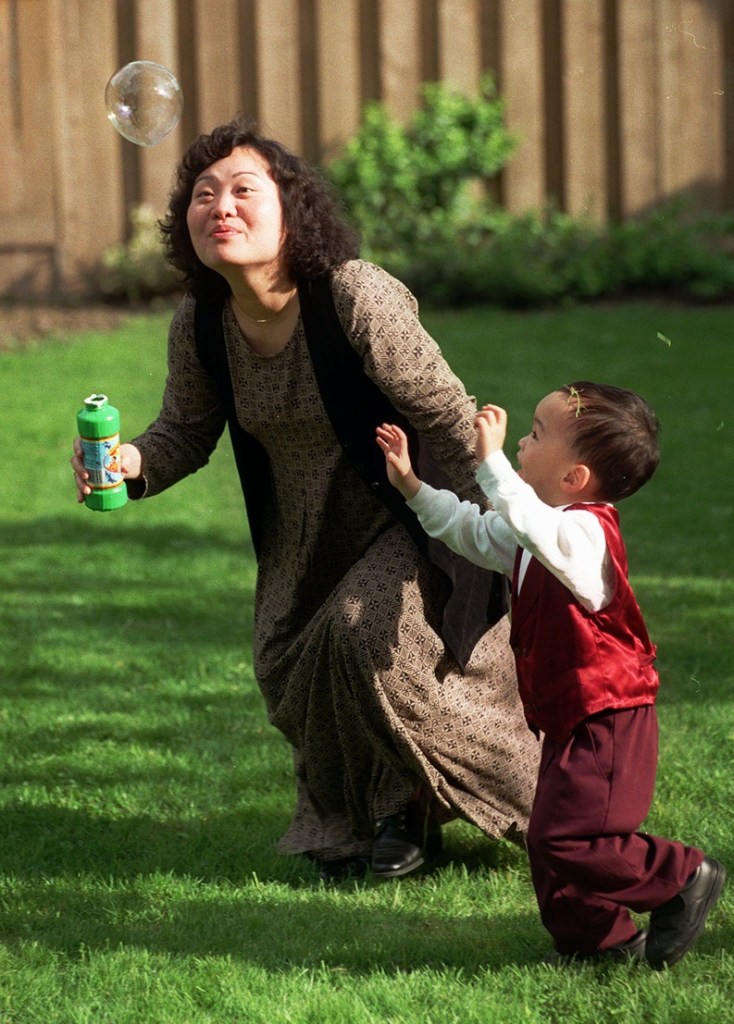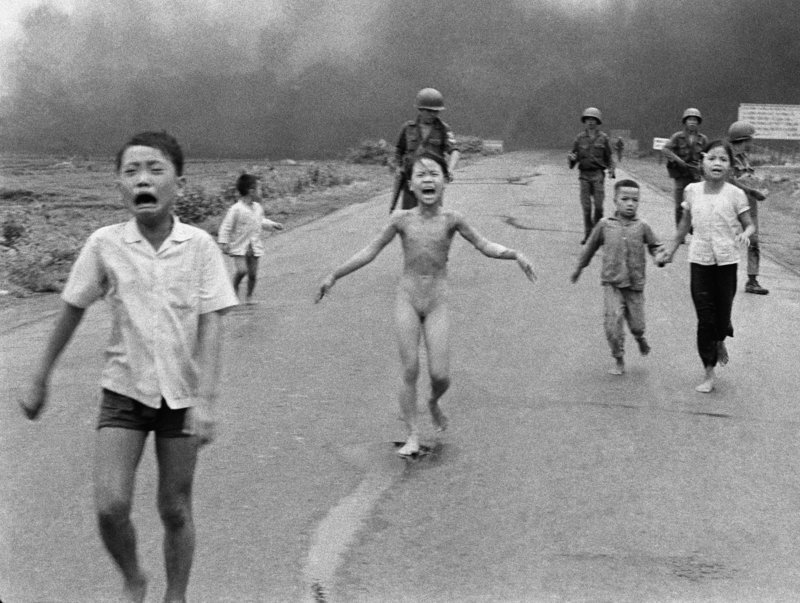TRANG BANG, Vietnam – In the picture, the girl will always be 9 years old and wailing “Too hot! Too hot!” as she runs down the road away from her burning Vietnamese village. She will always be naked and hysterical, after napalm melted through her clothes and burned into her skin like jellied lava.
She will always be a victim, and a symbol of the Vietnam War.
It only took a second for Associated Press photographer Huynh Cong “Nick” Ut to snap the iconic black-and-white image 40 years ago. It communicated the horrors of the Vietnam War in a way words could never describe, helping to end one of America’s darkest eras.
But beneath the photo lies a lesser-known story. It’s the tale of a seriously wounded child befriended by chance to a young photographer. A moment captured in the chaos of war that would serve as both her savior and her curse on a journey to understand life’s plan for her.
“I really wanted to escape from that little girl,” says Kim Phuc, now 49. “But it seems to me that the picture didn’t let me go.”
It was June 8, 1972, when Phuc heard the soldier’s scream: “We have to run out of this place! They will bomb here, and we will be dead!”
Seconds later, she saw the tails of yellow and purple smoke bombs curling around the Cao Dai temple where her family had sheltered for three days, as north and south Vietnamese forces fought for control of their village.
The little girl heard a roar overhead and twisted her neck to look up. As the South Vietnamese Skyraider plane grew fatter and louder, it swooped down toward her, dropping canisters like tumbling eggs flipping end over end.
“Ba-boom! Ba-boom!”
The ground rocked. Then the heat of a hundred furnaces exploded as orange flames spit in all directions.
Fire danced up Phuc’s left arm. The threads of her cotton clothes evaporated on contact. Trees became angry torches. Searing pain bit through skin and muscle.
“I will be ugly, and I’m not normal anymore,” she thought, as her right hand brushed furiously across her blistering arm. “People will see me in a different way.”
In shock, she sprinted down Highway 1 behind her older brother. She didn’t see the foreign journalists gathered as she ran. Then, she lost consciousness. Ut, the 21-year-old Vietnamese photographer who took the picture, drove Phuc to a small hospital. There, he was told the child was too far gone to help. But he flashed his American press badge, demanded that doctors treat the girl and left assured that she would not be forgotten.
“I cried when I saw her running,” said Ut, whose older brother was killed on assignment with the AP in the southern Mekong Delta. “If I don’t help her – if something happened and she died – I think I’d kill myself after that.”
Back at the office in what was then U.S.-backed Saigon, he developed his film. When the image of the naked little girl emerged, everyone feared it would be rejected because of the news agency’s strict policy against nudity.
But veteran Vietnam photo editor Horst Faas took one look and knew it was a shot made to break the rules. He argued the photo’s news value far outweighed any other concerns, and he won. The photograph galvanized the anti-war movement.
Phuc, meanwhile, was going through painful treatment.
Thirty percent of Phuc’s tiny body was scorched raw by third-degree burns, though her face somehow remained untouched. And over time, her melted skin began to heal.
“Every morning at 8 o’clock, the nurses put me in the burn bath to cut all my dead skin off,” she said. “I just cried and when I could not stand it any longer, I just passed out.”
After multiple skin grafts and surgeries, Phuc was finally allowed to leave the hospital, 13 months after the bombing. She had seen Ut’s photo, which by then had won the Pulitzer Prize, but she was still unaware of its reach and power.
She just wanted to go home and be a child again.
For a while, life did go somewhat back to normal. The photo was famous, but Phuc largely remained unknown. Ut and a few other journalists sometimes visited her at her village, but that stopped after northern communist forces seized control of South Vietnam on April 30, 1975, ending the war.
Life under the new regime became tough. Medical treatment and painkillers were expensive and hard to find for the teenager, who still suffered extreme headaches and pain. She worked hard and was accepted into medical school. But all that ended once the new communist leaders realized the propaganda value of the ‘napalm girl’ in the photo.
She was forced to quit college and return to her home province, where she was trotted out to meet foreign journalists. “I wanted to escape that picture,” she said. “I got burned by napalm, and I became a victim of war … My heart was exactly like a black coffee cup. I wished I died in that attack.”
One day, while visiting a library, Phuc found a Bible. For the first time, she started believing her life had a plan.
Then suddenly, once again, the photo that had given her unwanted fame brought opportunity. She traveled to West Germany in 1982 for medical care with the help of a foreign journalist. Later, Vietnam’s prime minister, also touched by her story, made arrangements for her to study in Cuba. It was then that she started dreaming of escaping to the West.
While at school, Phuc met a young Vietnamese man. She had never believed anyone would ever want her because of the ugly patchwork of scars that banded across her back and pitted her arm, but Bui Huy Toan seemed to love her more because of them. The two decided to marry in 1992 and honeymoon in Moscow. On the flight back to Cuba, the newlyweds defected during a refueling stop in Canada. She was free.
Phuc contacted Ut to share the news, and he encouraged her to tell her story to the world. But she was done giving interviews and posing for photos.
“I have a husband and a new life and want to be normal like everyone else,” she said.
The media eventually found Phuc living near Toronto, and she decided she needed to take control of her story. A book was written in 1999 and a documentary came out, at last the way she wanted it told.
After four decades, Phuc, now a mother of two sons, can finally look at the picture of herself running naked and understand why it remains so powerful. It had saved her, tested her and ultimately freed her.
“Most of the people, they know my picture but there’s very few that know about my life,” she said. “I’m so thankful that … I can accept the picture as a powerful gift. Then it is my choice. Then I can work with it for peace.”
Copy the Story Link
Send questions/comments to the editors.




Success. Please wait for the page to reload. If the page does not reload within 5 seconds, please refresh the page.
Enter your email and password to access comments.
Hi, to comment on stories you must . This profile is in addition to your subscription and website login.
Already have a commenting profile? .
Invalid username/password.
Please check your email to confirm and complete your registration.
Only subscribers are eligible to post comments. Please subscribe or login first for digital access. Here’s why.
Use the form below to reset your password. When you've submitted your account email, we will send an email with a reset code.